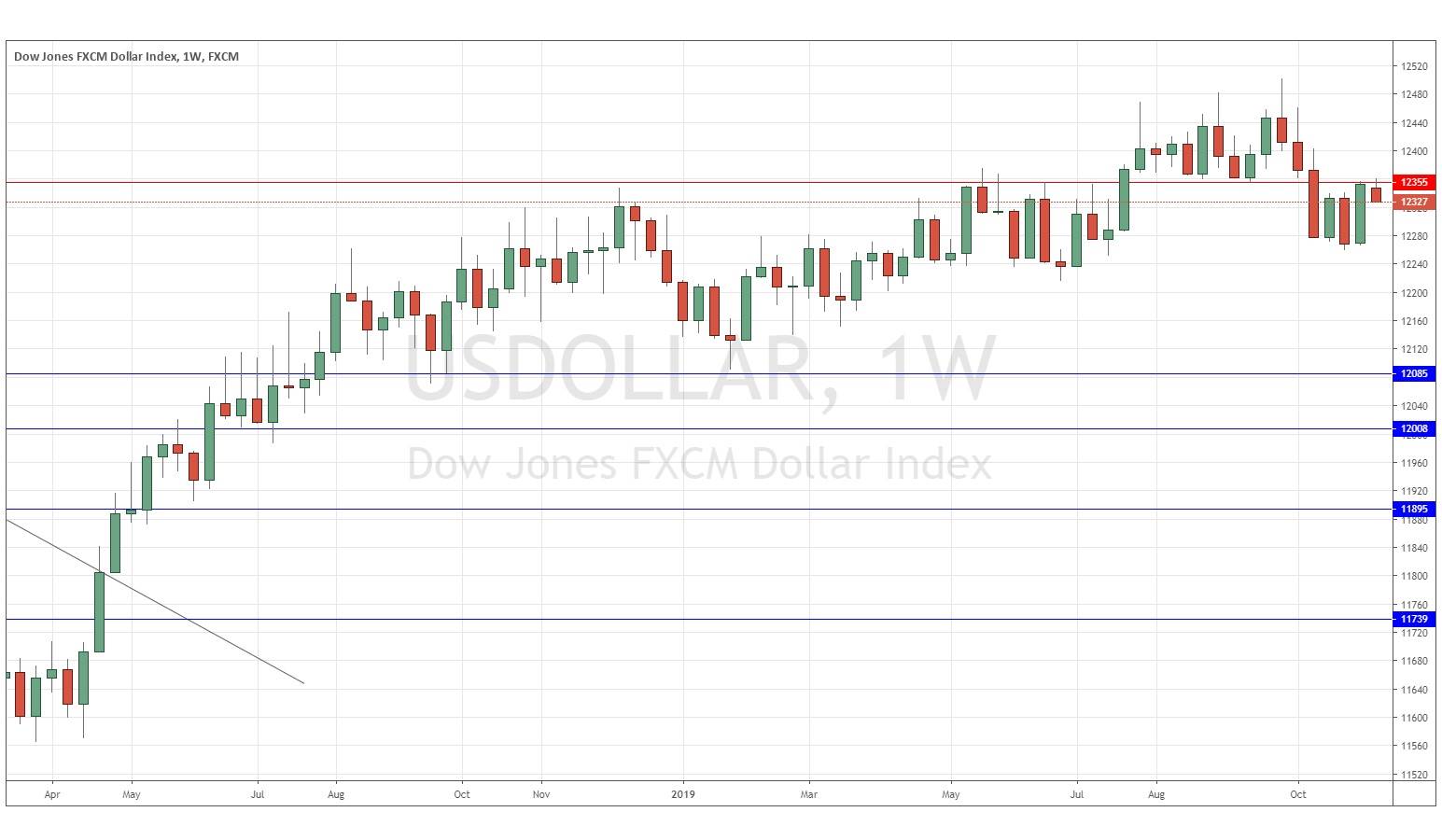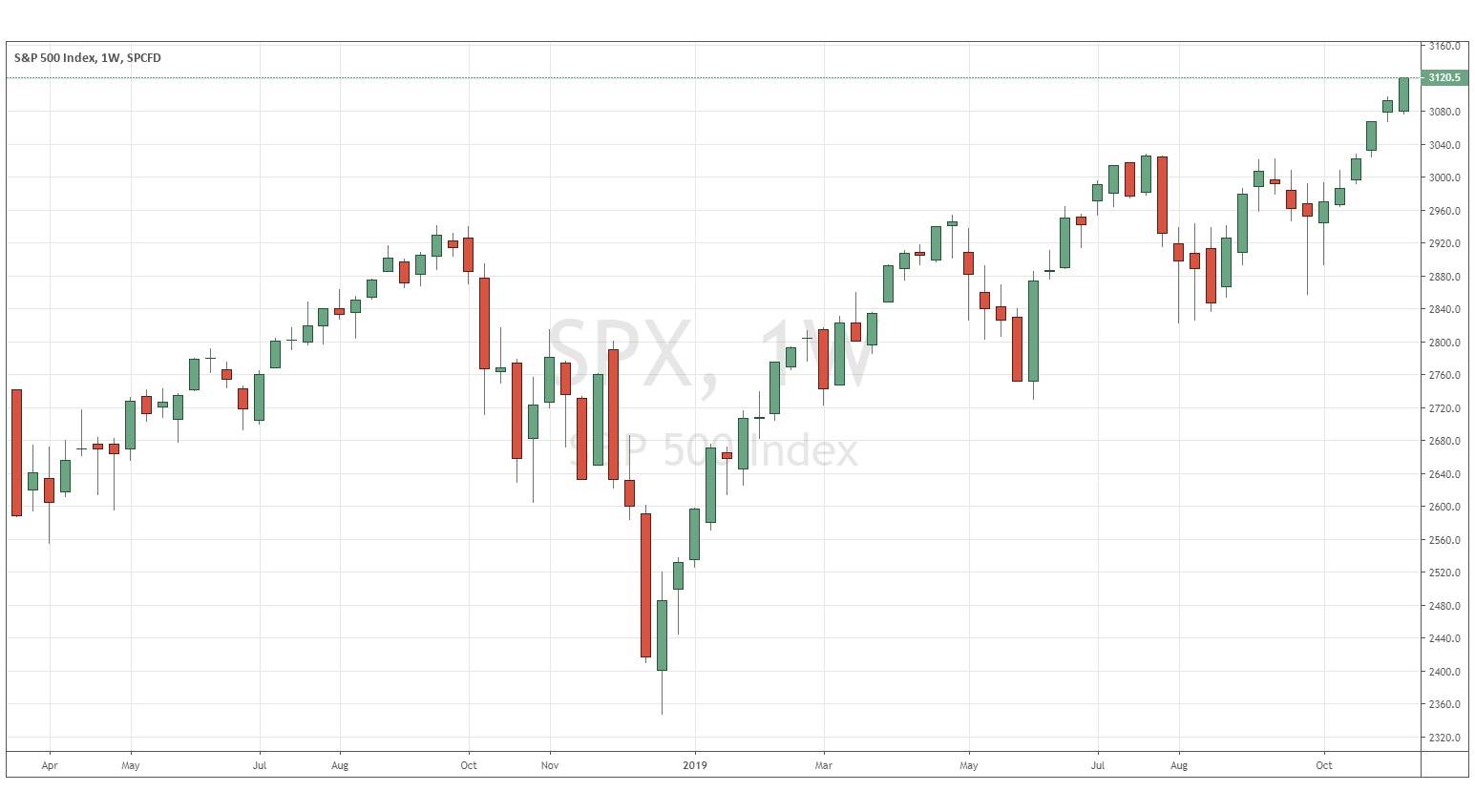The difference between success and failure in Forex trading is very likely to depend upon which currency pairs you choose to trade each week, and not on the exact trading methods you might use to determine trade entries and exits. Each week I am going to analyze fundamentals, sentiment and technical positions in order to determine which currency pairs are most likely to produce the easiest and most profitable trading opportunities over the next week. In some cases, it will be trading the trend. In other cases, it will be trading support and resistance levels during more ranging markets.
Big Picture 17th November 2019
In my previous piece last week, I forecasted that the best trade would be long of the S&P 500 Index and the USD/JPY currency pair, buying dips with tight stop losses. This was a good call and would have led to profitable trades overall, with the Index ending the week up from its open on Monday by 1.30%, while the USD/JPY currency pair ended the week down by 0.43%.
Last week’s Forex market saw the strongest rise in the relative value of the New Zealand Dollar, and the strongest fall in the relative value of the Australian Dollar.
Fundamental Analysis & Market Sentiment
Fundamental analysts are tilting in favor of the view that last month’s quarter-point cut in the U.S. interest rate will be the last cut for a while, with Jerome Powell signaling there are likely to be no further cuts in a while as he sounded upbeat on the U.S. economy.
The U.S. economy is still growing, but there are some fears of a pending recession. However, the benchmark U.S. stock index, the S&P 500, ended the week at an all-time high price, boosted by signals from the U.S. administration that a resolution of its trade dispute with China is moving closer towards a positive resolution and from bullish noises on the economy from the Federal Reserve. The U.S. Dollar fell a little over the week.
Last week saw the Forex market focus on the U.S. Dollar, and the New Zealand Dollar was boosted by the RBNZ’s decision to pass on a widely expected rate cut.
The British Pound remains quite firm as the governing Conservative Party seems to be heading for a clear victory, which should ensure that Brexit happens in line with the government’s wishes at the end of January. This enhanced certainty is likely to boost the Pound.
Technical Analysis
U.S. Dollar Index
The weekly price chart below shows last week printed a small bearish candlestick, which clearly rejected the resistance level at 12355, and closed right at the bottom of its price range. The price is below its level from 3 months ago, and below its level from 6 months ago as well as the resistance level. This suggests that next week’s action is more likely to be bearish than bullish.
S&P 500 Index
The weekly price chart below shows last week printed a bullish candlestick, which closed very near its high at an all-time high price. These are bullish signs, suggesting that the price is likely to rise further over the course of the coming week. Research shows that over the last 50 years, similar closes have indicated a further weekly rise on just under 53% of occasions. However, all-time highs can be prone to sharp selloffs, so it is best to trade long using relatively tight stop losses, and to be guided by shorter-term time frames.
Conclusion
This week I forecast the best trades are likely to be buying any relatively shallow dips in the S&P 500 Index, using tight stop losses. The Forex market is ranging everywhere so I see no appropriate trade set ups in Forex this week.



